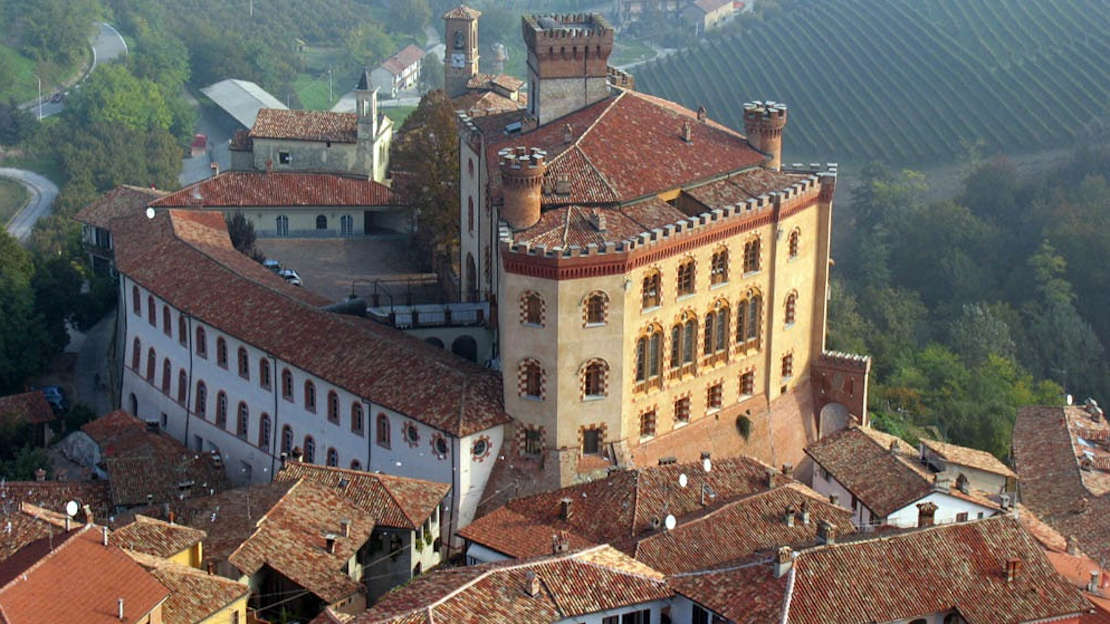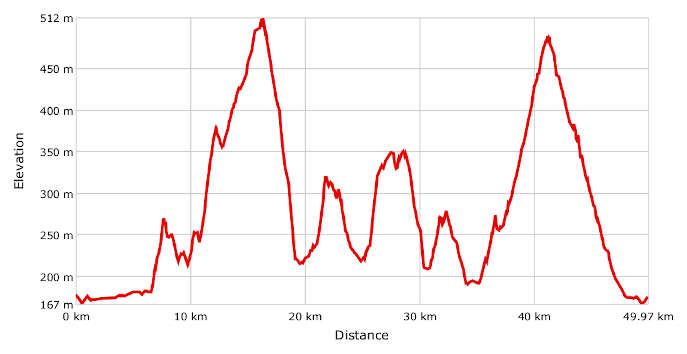
- Bike: trekking
- Difficulty: ***
- Distance: 50 km
- Altitude difference: 345 m
- Total ascent: 1132 m
- Total descent: 1134 m

This route comes from Piemonte Bike and lets you see the villages of Langhe, whose hills, lined with rows of vines, are part of the UNESCO World Heritage Site: 'Vineyard Landscape of Piedmont: Langhe-Roero and Monferrato'.
Barolo is one of the most famous and admired wines in the world. Known as the king of wines, it is produced from Nebbiolo grapes, one of the greatest varietals in the world but found almost exclusively in Piedmont.
It is garnet red in colour, with orange tints that become stronger as it ages. The aroma is intense and clear, with floral hints of rose and violet in younger wines. In time, Barolo takes on fruity hints of cherries in syrup and cooked plums, then plant aromas of undergrowth and wet earth that call to mind truffles and mushrooms, and finally spicy notes like pepper, cinnamon and vanilla, which turn into animal aromas like aged leather. Young wines are full-bodied, with a dry, full, robust and distinctly tannin-rich flavour that is also smooth, harmonious and enchanting. In the mouth it reveals the red cherries and blackberries, with an aftertaste of liquorice, vanilla, tobacco and coffee.
Barolo is an important wine that needs to be aged for at least three years, at least two of them in a sessile oak or chestnut cask. It becomes Barolo Riserva if aged for a minimum of five years, at least two of which must be in a sessile oak or chestnut cask.
At Corso Enotria 2, Alba, you will find Consorzio di Tutela Barolo Barbaresco Alba Langhe e Dogliani, the organisation that since 1934 has been promoting the wines of the Langhe and protecting their identity. Our route begins right in the historic centre of Alba, now famous for its superb wine and food, including truffles, and birthplace of the Roman emperor Publius Helvius Pertinax.
Take the cycle path along Corso Europa and carry on along the provincial road, watching out for the heavy traffic, in the direction of Roddi. Enter this little medieval village by turning off uphill to its historic centre, home to a castle and a canine university that has been training dogs to hunt truffles since 1880. Carry on in the direction of Verduno. Here, next to the royal castle, you will find the splendid Parco del Belvedere, which offers a view and a chance to get your breath back. From Verduno you come to La Morra, a village with another view point, this time a balcony overlooking the Langhe. From here you can walk through the vineyards in search of the Barolo chapel, a masterpiece by Sol Lewitt and David Tremlett. You can also reach it on your bike, but the roads are not tarmacked in some places.
From La Morra, go on along the ridge to Barolo, passing through vineyards bearing the names of famous local wines. We suggest that you visit the wine museum, or WiMu, and the corkscrew museum, then try a glass at the Enoteca Regionale del Barolo.
The route carries on in the direction of Castiglione Falletto, which has a castle with a round tower, then goes back over constant ups and downs to La Morra. You then find yourself among the vineyards again, under the watchful gaze of the aged cedar of Lebanon atop the hill Collina dell'Annunziata. Go down from here to Grinzane Cavour – taking care on a short stretch of provincial road – and up to the castle, the second of the six parts of the UNESCO site 'Vineyard Landscape of Piedmont'. The castle is home to the Enoteca Regionale Piemontese Cavour, and was once the residence of Camillo Benso, count of Cavour.
You must enjoy the splendid view from the castle garden before tackling the last uphill stretch to Diano d’Alba. The short push is definitely worth it for the village's Dolcetto wine and 360° view over the Langhe. Afterwards, go downhill back to Alba.
